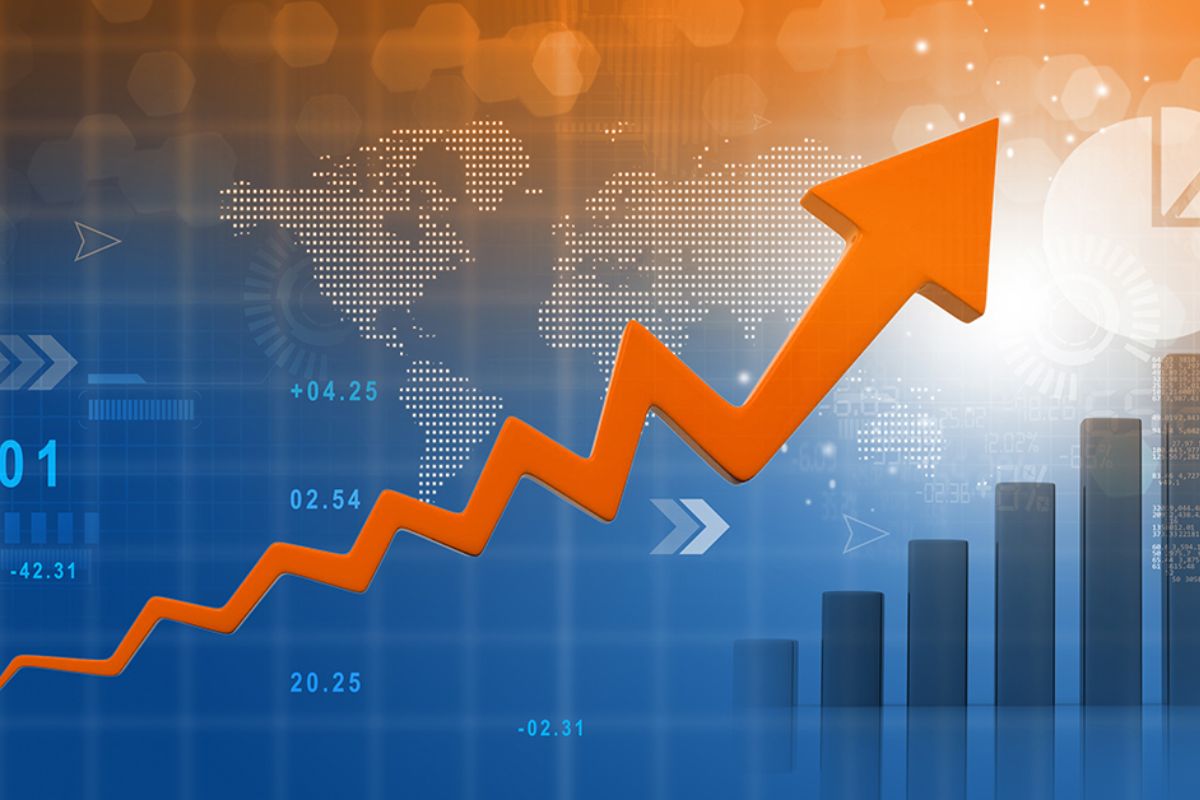The world economy is in jeopardy, according to the World Bank, with global growth forecast to decline from 3.1% in 2022 to 2.1% in 2023. However, the most recent edition of the Global Economic Prospects report, released earlier this month, puts India’s growth for FY2024 at 6.3%, a solid level against a bleak global prognosis, even if the Bank decreased India’s expected output from 6.6% in January.
According to sources, the Bank’s top economist Indermit Gill put a bleak spin on the June estimates, predicting that 2023 will be one of the weakest years for advanced nations in the earlier 5 decades. This makes India’s anticipated figure appear brighter.

Further projections for India.
The International Monetary Fund (IMF) estimates 5.9%, while the Reserve Bank of India (RBI) estimates 6.5%. Bibek Debroy, head of the Prime Minister’s Economic Advisory Council, puts the @ at 6.5 per cent. According to sources, forecasters tend to underestimate India’s growth figures. Outside of government, estimates for 2022-23 were typically hesitant to pass the mental threshold of 7%. According to him, it was almost as if it was a pricing point for a product, with 6.9% preferring to 7.1%. Finally, the growth rate of India’s gross domestic product (GDP) in 2022-23 was 7.2% higher than most forecasts predicted. Debroy, on the other hand, admits that India should aim for 7% to 7.5% growth over the next three to five years.
What is the possible broadening rate for the current financial year?
Despite challenges like a gradual recovery in domestic manufacturing, uncertain geopolitics, and the looming fear of El Nino, which may disrupt the monsoon, the Indian economy is expected to grow at around 6.5% in FY24. This falls short of the target growth rate of 7% or more. Not long ago, India hoped to reach a double-digit growth rate, which seemed fair when the country was recording 8.2% in 2016-17 and 7.2% in 2017-18 before plummeting. In 2019-20, a year mostly unaffected by the Covid pandemic, India’s GDP growth rate was a modest 3.7%.
El Nino is a climatic phenomenon associated with an anomalous warming of the equatorial Pacific Ocean’s surface waters. According to the India Meteorological Department (IMD), this might have an impact on the monsoon, particularly its second period in August and September. Meanwhile, dipole refers to the Indian Ocean’s sea surface temperatures. A monsoon is an important event in India’s economic calendar since half of the country’s net sown area is still rain-fed.

The relevance is shown by the fact that India’s gross value added (GVA) growth rate in agricultural and allied industries was positive during the complete Covid-19 period (4.1% in 2020-21, 3.5% in 2021-22, and 4% in 2022-23), whereas most other sectors fell. (GVA equals GDP + subsidies less taxes.) Some significant reduction in agricultural growth will have a negative impact on GDP.
Can this be maintained?
There’s one more issue to consider. Can India maintain a healthy growth pace now that the epidemic aftershocks have subsided? According to a new research, despite the concerns of geopolitical fragmentation and global economic uncertainty, India might be in for a multi-year development cycle with a rise in the private investment cycle for manufacturing and infrastructure.
According to EY’s Srivastava, several industries, such as manufacturing, have yet to fully recover. Prior to Covid, manufacturing contracted in FY20. The compound yearly growth rate for the market from FY19 to FY23 is slightly less than 3%, and the sector needs policy scaffolding to boost overall production and generate employment. He argues that this will bring the Indian economy nearer to its optimum growth rate of 7%.
According to Majumdar, an El Nino-driven, below-average monsoon can put a strain on agricultural and rural demand, limiting consumption growth. It will even expand food inflation. The RBI, which forecasts 6.5% growth, is mostly relying on the recent Union budget’s liberal capital expenditure (capex). The capital spending was boosted by 33% to Rs 10 lakh crore. The interest-free loan of Rs 1.3 lakh crore to states is even depending on the amount being spent during the current fiscal year.
According to the central bank’s annual report for 2022-23, the crowding-in effects of persistent increases in government capex in recent years are likely to encourage increased private investment in 2023-24. The medium-term prospects may be determined by the Union government’s ability to continue its high capex story.

The RBI hiked the repo rate by 250 basis points between May 2022 and February 2023 with the sole goal of managing inflation, a vital component in forecasting future development. In the previous fiscal year, headline inflation averaged 6.7%, 115 basis points more than the earlier year. Despite rising food, energy, and commodity costs at home and abroad, and many other hurdles, like aggressive monetary policy tightening and challenging geoeconomic fragmentation, the Indian economy displayed resilience in 2022-23, according to the RBI research.
As we enter into the 3rd month of the current fiscal year, it is clear that some of the earlier obstacles have weakened but not disappeared. The global outlook, especially for more upgraded nations, remains grim, which may have an impact on India’s exports and foreign direct investment inflows. Even after this problem a few analysts mention that India may attain a valuable 6.5% GDP growth rate this year until any other problematic situation appears and throws their projections off track.
Conclusion.
Many further projections place India’s current fiscal year growth between 5.9% and 6.5%, with a few analysts mentioning problems ahead for the Indian economy, like a delayed recovery in local manufacturing, geopolitical instability, and the chances of El Nino. Others, however, believe that a healthy growth rate might be sustained, provided policies improve productivity, generate employment, & boost overall production.



